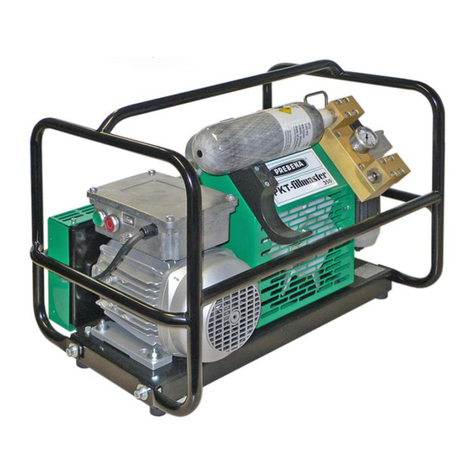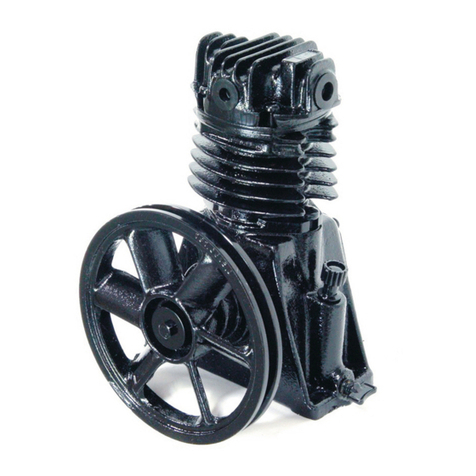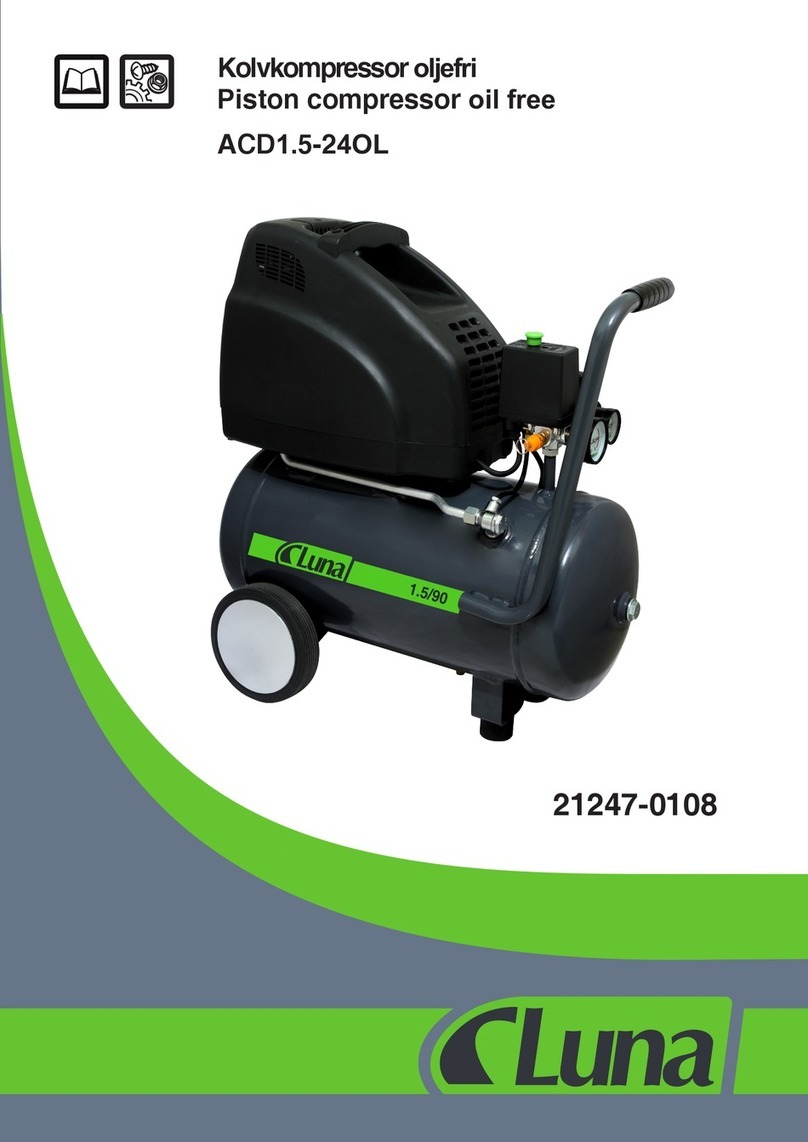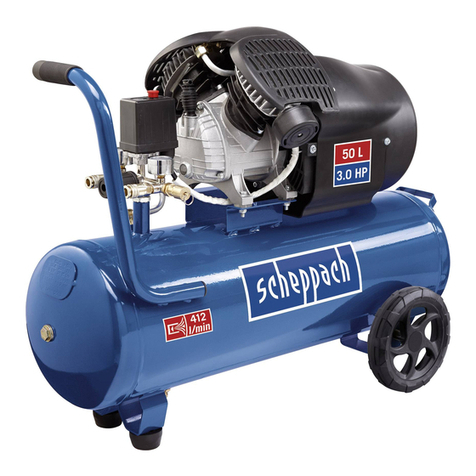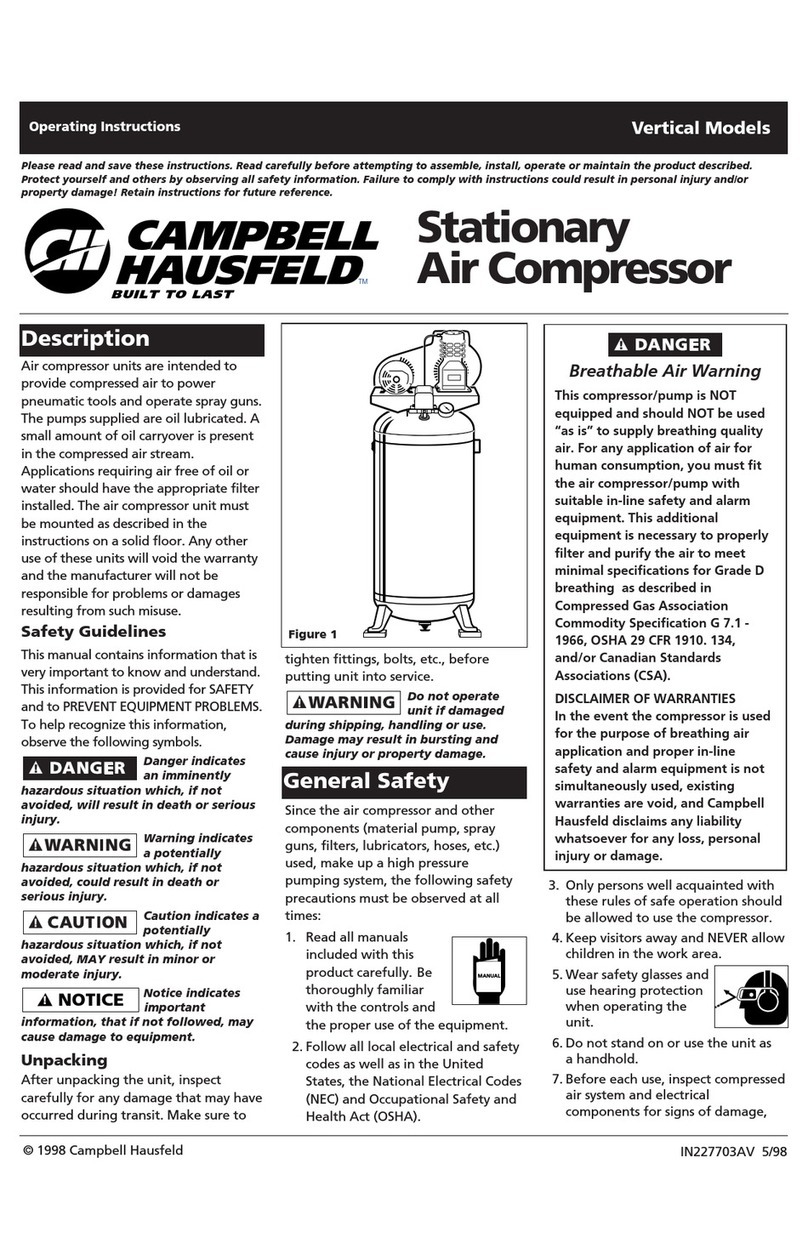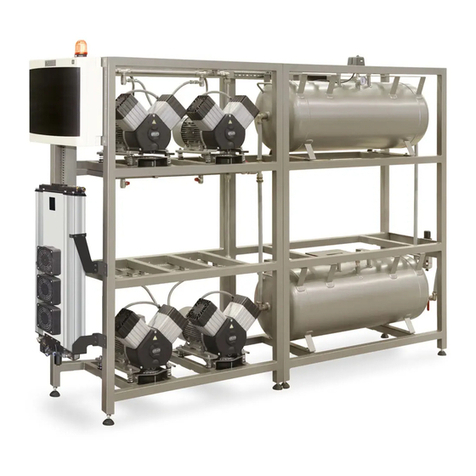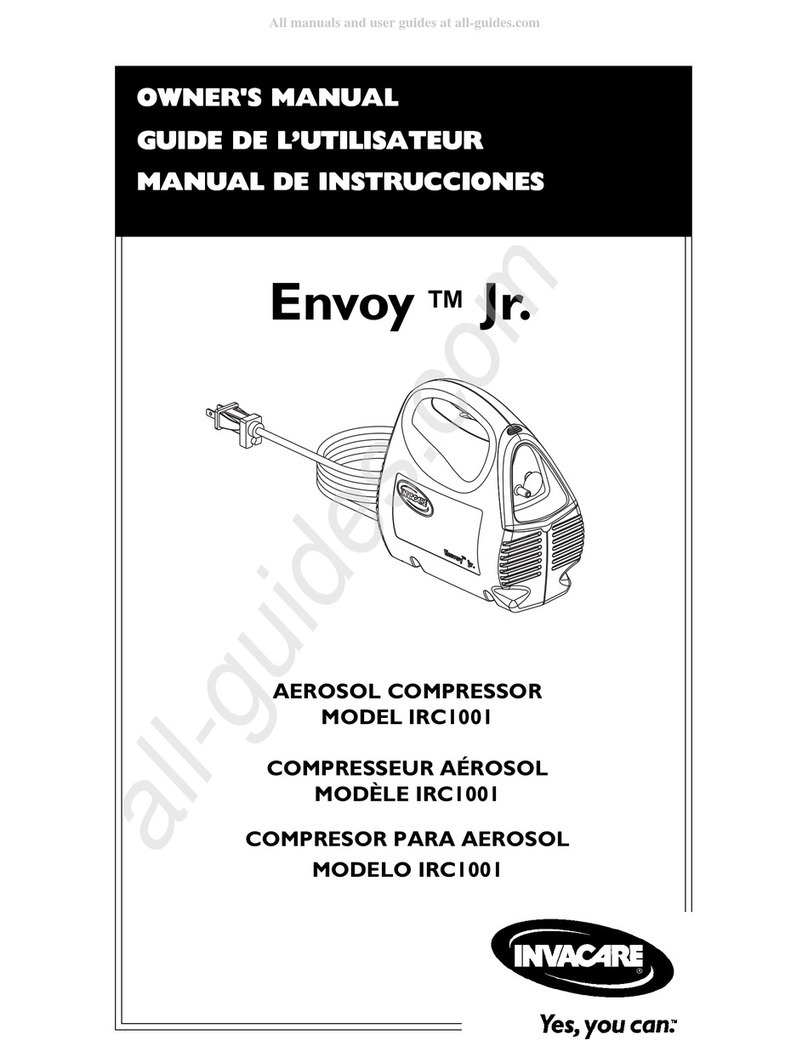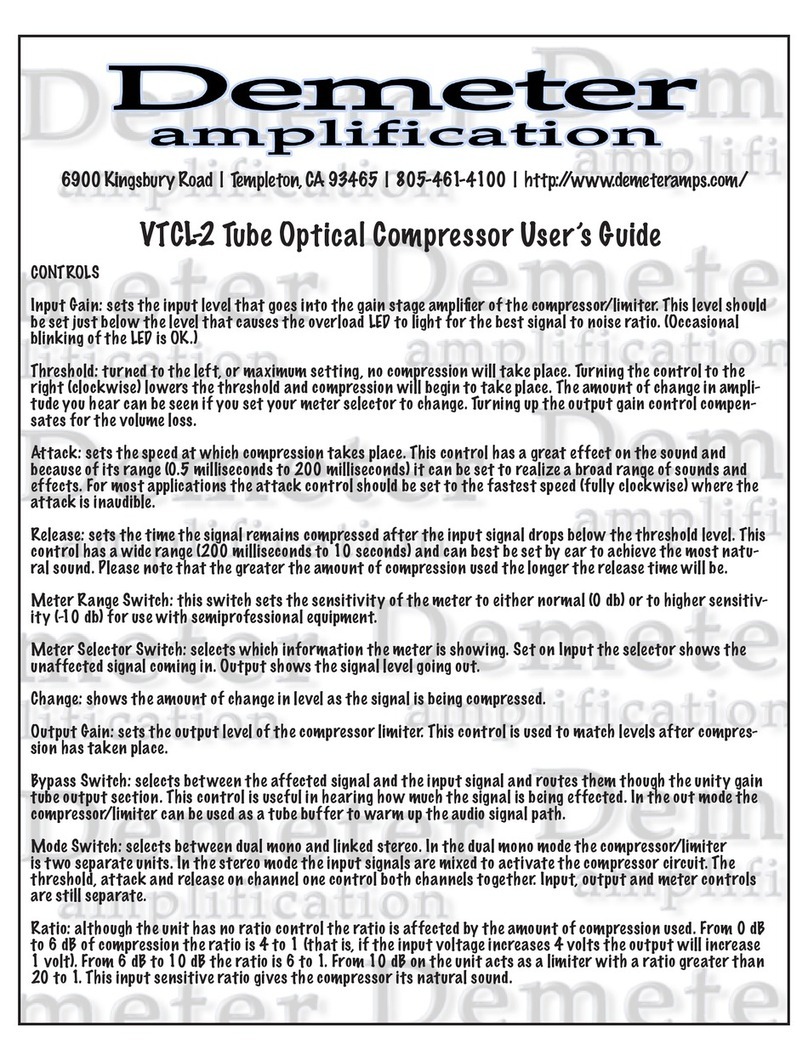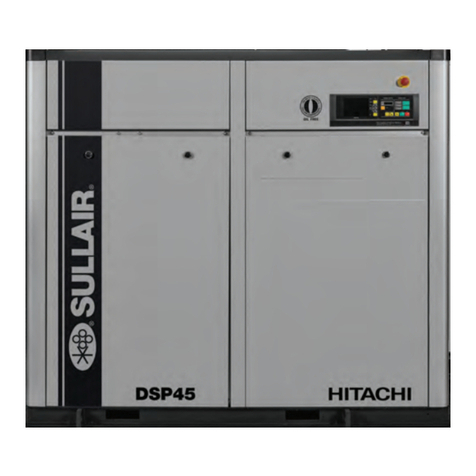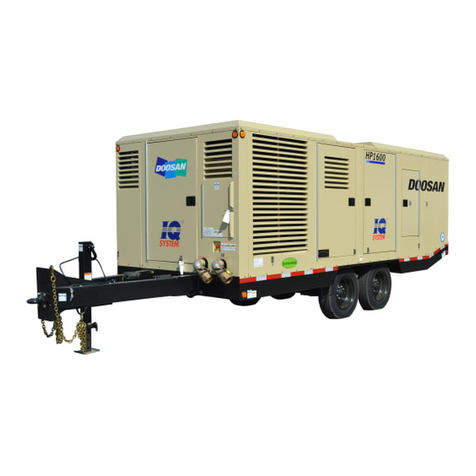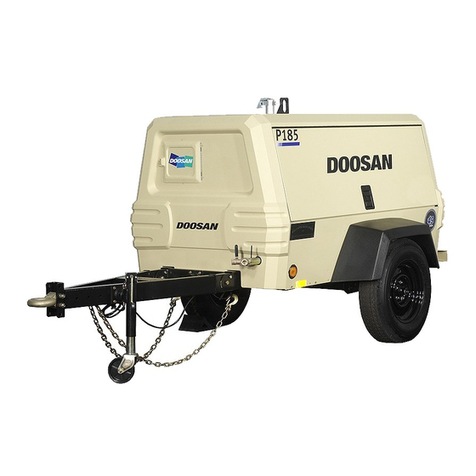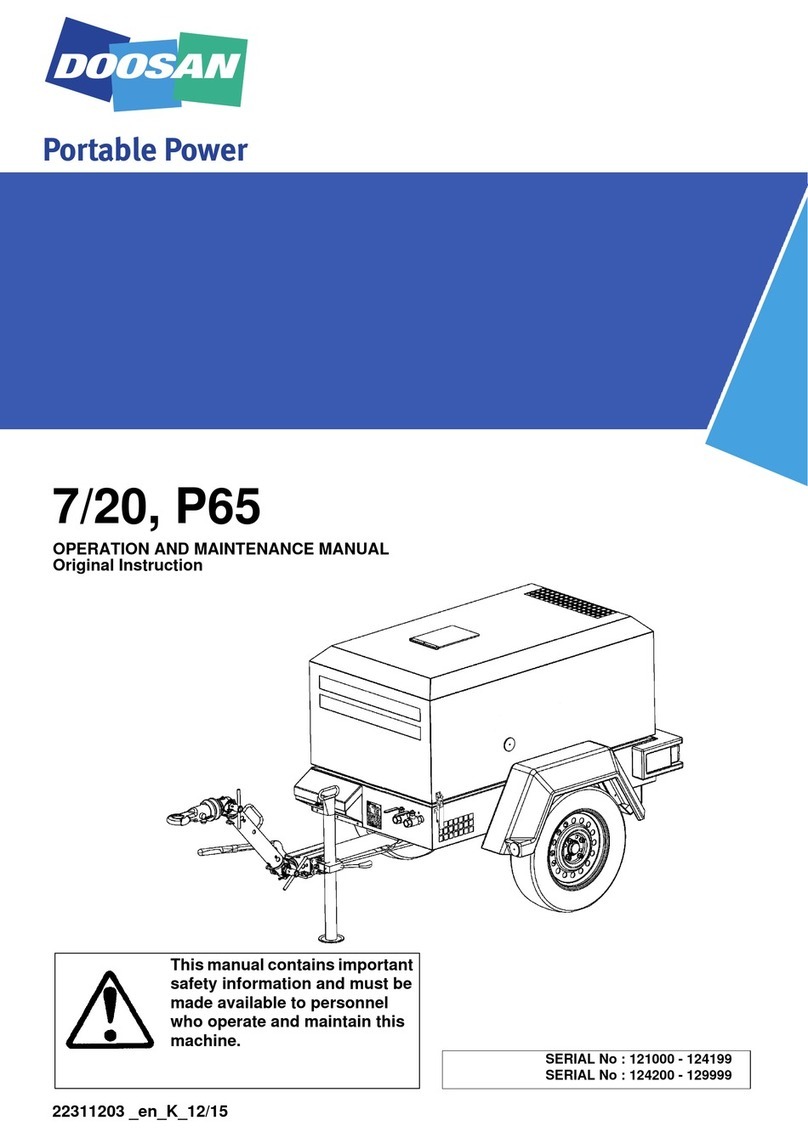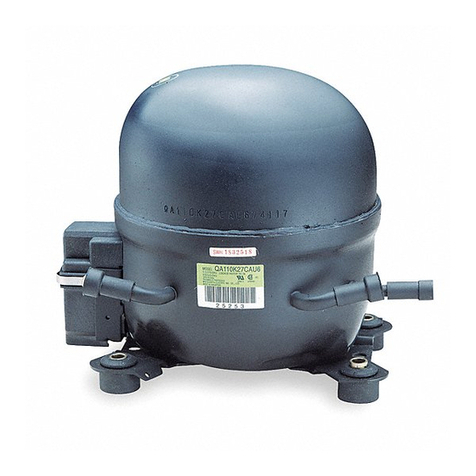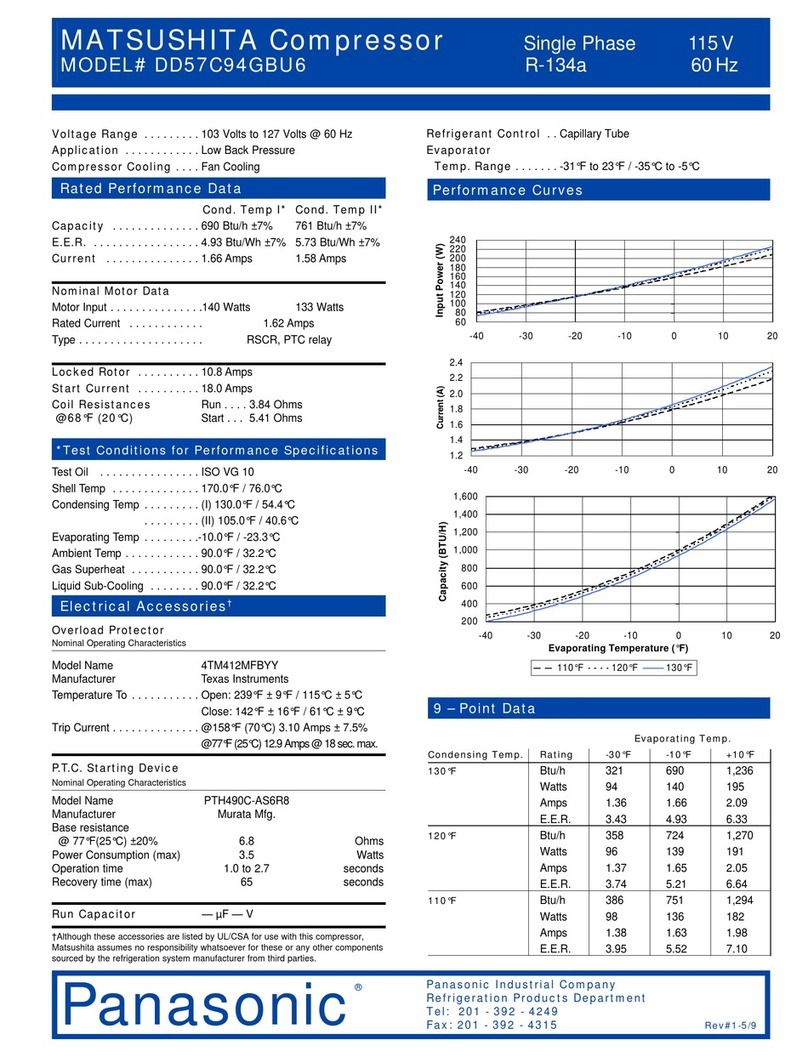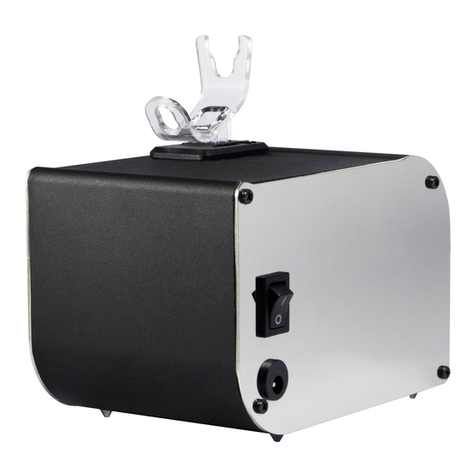
SAFETY 7
7/205, 10/175, 12/155, 14/145, 12/205
General Information
Never operate unit without first observing all safety warnings and
carefully reading the operation and maintenance manual shipped from
the factory with this machine.
Ensure that the operator reads and understands the decals and
consults the manuals before maintenance or operation.
Ensure that the Operation & Maintenance manual, and the manual
holder, are not removed permanently from the machine.
Ensure that maintenance personnel are adequately trained, competent
and have read the Maintenance Manuals.
Ensure that ice and snow do not block the cooling air inlets.
Use hearing protectors when unit is running.
Make sure that all protective covers are in place and that the canopy/
doors are closed during operation.
The specification of this machine is such that the machine is not
suitable for use in flammable gas risk areas. If such an application is
required then all local regulations, codes of practice and site rules must
be observed. To ensure that the machine can operate in a safe and
reliable manner, additional equipment such as gas detection, exhaust
spark arresters, and intake (shut-off) valves may be required,
dependant on local regulations or the degree of risk involved.
A weekly visual check must be made on all fasteners/fixing screws
securing mechanical parts. In particular, safety-related parts such as
coupling hitch, drawbar components, road-wheels, and lifting bail
should be checked for total security.
All components which are loose, damaged or unserviceable, must be
rectified without delay.
Air discharged from this machine may contain carbon monoxide or
other contaminants which will cause serious injury or death. Do not
breathe this air.
This machine produces loud noise with the doors open or service valve
vented. Extended exposure to loud noise can cause hearing loss.
Always wear hearing protection when doors are open or service valve
is vented.
Never inspect or service unit without first disconnecting battery
cable(s) to prevent accidental starting.
Do not use petroleum products (solvents or fuels) under high pressure
as this can penetrate the skin and result in serious illness. wear eye
protection while cleaning unit with compressed air to prevent debris
from injuring eye(s).
Rotating fan blade can cause serious injury. Do not operate without
guard in place.
The machine must not be used for transport or storage of explosive,
flammable or other dangerous substances.
Use care to avoid contacting hot surfaces (engine exhaust manifold
and piping, air receiver and air discharge piping, etc.).
Ether is an extremely volatile, highly inflammable gas. When it is
specified as a starting aid, use sparingly. DO NOT USE ETHER IF THE
MACHINE HAS GLOW PLUGS OR INLET HEATER STARTING AIDS
OR ENGINE DAMAGE WILL RESULT.
Never operate unit with guards, covers or screens removed. Keep
hands, hair, clothing, tools, blow gun tips, etc. well away from moving
parts.
Compressed air
Compressed air can be dangerous if incorrectly handled. Before doing
any work on the unit, ensure that all pressure is vented from the system
and that the machine cannot be started accidentally.
Ensure that the machine is operating at the rated pressure and that the
rated pressure is known to all relevant personnel.
All air pressure equipment installed in or connected to the machine
must have safe working pressure ratings of at least the machine rated
pressure.
If more than one compressor is connected to one common
downstream plant, effective check valves and isolation valves must be
fitted and controlled by work procedures, so that one machine cannot
accidentally be pressurised / over pressurised by another.
Compressed air must not be used for a direct feed to any form of
breathing apparatus or mask.
High Pressure Air can cause serious injury or death. Relieve pressure
before removing filler plugs/caps, fittings or covers.
Air pressure can remain trapped in air supply line which can result in
serious injury or death. Always carefully vent air supply line at tool or
vent valve before performing any service.
The discharged air contains a very small percentage of compressor
lubricating oil and care should be taken to ensure that downstream
equipment is compatible.
If the discharged air is to be ultimately released into a confined space,
adequate ventilation must be provided.
When using compressed air always use appropriate personal
protective equipment.
All pressure containing parts, especially flexible hoses and their
couplings, must be regularly inspected, be free from defects and be
replaced according to the Manual instructions.
Avoid bodily contact with compressed air.
The safety valve located in the separator tank must be checked
periodically for correct operation.
Whenever the machine is stopped, air will flow back into the
compressor system from devices or systems downstream of the
machine unless the service valve is closed. Install a check valve at the
machine service valve to prevent reverse flow in the event of an
unexpected shutdown when the service valve is open.
Disconnected air hoses whip and can cause serious injury or death.
Always attach a safety flow restrictor to each hose at the source of
supply or branch line in accordance with OSHA Regulation 29CFR
Section 1926.302(b).
Never allow the unit to sit stopped with pressure in the receiver-
separator system.
Materials
The following substances may be produced during the operation of this
machine:
• brake lining dust
• engine exhaust fumes
AVOID INHALATION
Ensure that adequate ventilation of the cooling system and exhaust
gases is maintained at all times.
WARNINGS
Warnings call attention to instructions which must be followed
precisely to avoid injury or death.
CAUTIONS
Cautions call attention to instructions which must be followed
precisely to avoid damaging the product, process or its surroundings.
NOTES
Notes are used for supplementary information.
